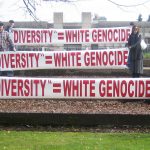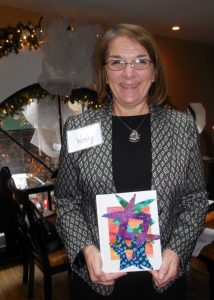Continued from #METOO and What I do About it: Part 1
It was another 7 years before I began working in the EEO (Equal Employment Opportunity) Office at the NYC Department of Transportation. In 1987 I became the Deputy Women’s Advisor for the agency (on top of my day job as Deputy Director of Administrative Services). I had been active in fighting for equity and justice in many different forms throughout my life and the Women’s Advisors’ Program was established to assure that women who worked for the City of New York were not discriminated against or harassed. As part of my Women’s Advisor’s role, I became a member of the NYC Commission on the Status of Women’s (CSW) Sexual Harassment Task Force which was led by Bella Abzug, the CSW’s Chairperson at that time. We read many reports, interviewed hundreds of victims and developed a comprehensive report on the subject. As a result of this, I was invited to join DOT’s EEO Office 1988. I should note that it took a few years of experience investigating claims of sexual harassment and discrimination along with extensive training before I was able to do this work without overly identifying with complainants or mentally condemning every respondent (alleged harasser) prior to completing an investigation. In 1991, shortly after Anita Hill testified in the Clarence Thomas Supreme Court confirmation hearing, I was promoted to Director of the EEO Office. Sexual harassment against women was headline news for a few weeks at that time and employers began implemented mandatory training on sexual harassment and discrimination. The training that was being developed was not, in my humble opinion, effective, so I dedicated myself to preventing harassment in the first place.
In May of 1994, after 7 years at DOT managing EEO investigations, reports, and training, I became the Program Director the CSW. The CSW focused on issues relevant to women and girls in the workplace and beyond. One of my first responsibilities was to support the CSW’s domestic violence task force. In June of 1994, OJ Simpson made the headlines when he was arrested for murdering his wife and her friend. Domestic violence against women once again became headline news for a few weeks. Funds were allocated to protect women and girls from violence and educate professionals on how to effectively deal with and prevent domestic violence. The parallel between domestic violence abusers and sexual harassers is precise and cringe-worthy: control, intimidate, and discredit your victims.
In the 30 years that I have been doing this work, I have seen little improvement in the areas of preventing and responding to sexual harassment. Most employers do not have effective policies or protocols. Those that do have policies and protocols in place rarely implement or enforce them.
Most employers do not properly train their employees to prevent harassment. In my observation, webinars and training segments as short as 90 minute focused on reviewing the laws and definitions relating to sexual harassment do not create self-awareness or modify behavior. Despite this, most employers pay thousands of dollars every year to repeat this mandatory, ineffective exercise. I often refer to this process as ‘death by power point’: the facilitator reads slide after slide after slide and then expects participants to actually retain some of the information.
Most employers do not respond to complaints appropriately and use training as punishment or a form of insurance against litigation. First (and I am not giving anyone legal advice here), training employees does not insure that employers will not be held liable for failing to protect their employees from sexual harassment or discriminatory conduct. Second, having someone who has already had sexual harassment prevention training retake that training in response to their violating your policies or the law by harassing an employee illustrates insanity to me. It is, however, the most common method for responding to sexual harassment by employers. Training (and I prefer using the word educating when referencing educating people on their rights and responsibilities, and most importantly, on self-awareness and behavior) should never be used as punishment. I have facilitated hundreds of sexual harassment prevention sessions where employees drag themselves into the training room like someone being forced to eat their peas knowing that they still won’t get dessert. That is a direct result of organizations inadvertently giving training a bad reputation. It is all too common for employees to expect these sessions to be boring, irrelevant, and insulting. Sending a respondent (a person accused of sexual harassment), whose misconduct has been corroborated, to be retrained is an even greater of a waste of resources.
Most employers do not hold harassers responsible for their actions and will often allow perpetrators of harassment and discrimination to victimize multiple employees before taking any action whatsoever. When it is confirmed that an employee has violated the law by sexually harassing another employee, an organization’s response sends a clear, loud message to all of the other employees. Usually that message is, “We won’t take any strong action, because we don’t want to be sued by the respondent for wrongful termination.” So, some employees learn that they can harass with impunity, especially if they are high up on the organization chart. Most employers do not hold leaders responsible for their own conduct or for managing the conduct of those who report to them. Accountability by leadership is critical to sending a message that harassment and discrimination will not be tolerated in an organization.
Most employers do not support victims who come forward to complain about being harassed. This goes back to protocols and policies. People who are not trained to investigate allegations of harassment and discrimination should never be involved in an investigation. Even worse, complaints are often mishandled from the start because employees are told to go to their supervisors with their allegations. If I work in IT, my supervisor is trained to code computers, not handle difficult and complex sexual harassment complaints. Organizations often do not realize that they put supervisors at risk when they ask them to become involved in allegations of discrimination.
Sexual harassment and assault are in the headlines again: Hollywood, Wall Street, Silicon Valley, and other places occupied by humans are being exposed as unsafe places, especially for women. The claims of the hundreds of women who have come forward in recent months range from having been recipients of inappropriate comments to having been victims of sexual assault. Headline news grabs our attention, upsets us, results in many articles and conversations about how pervasive and insidious sexual harassment is, and devastates the organizations that they expose. But, headline news has not resulted in effective prevention of or response to sexual harassment in the workplace. Not before 1991 and not since. Isn’t today a great time to change that?
I will address the solutions to the problems outlined above in #METOO and What I Do About it: Part 3 – Solutions which will be posted later this week.
Please share your stories and any other feedback that you have so that together we can create lasting solutions to this ancient problem.
Onward!
~ Wendy
November 1, 2017














